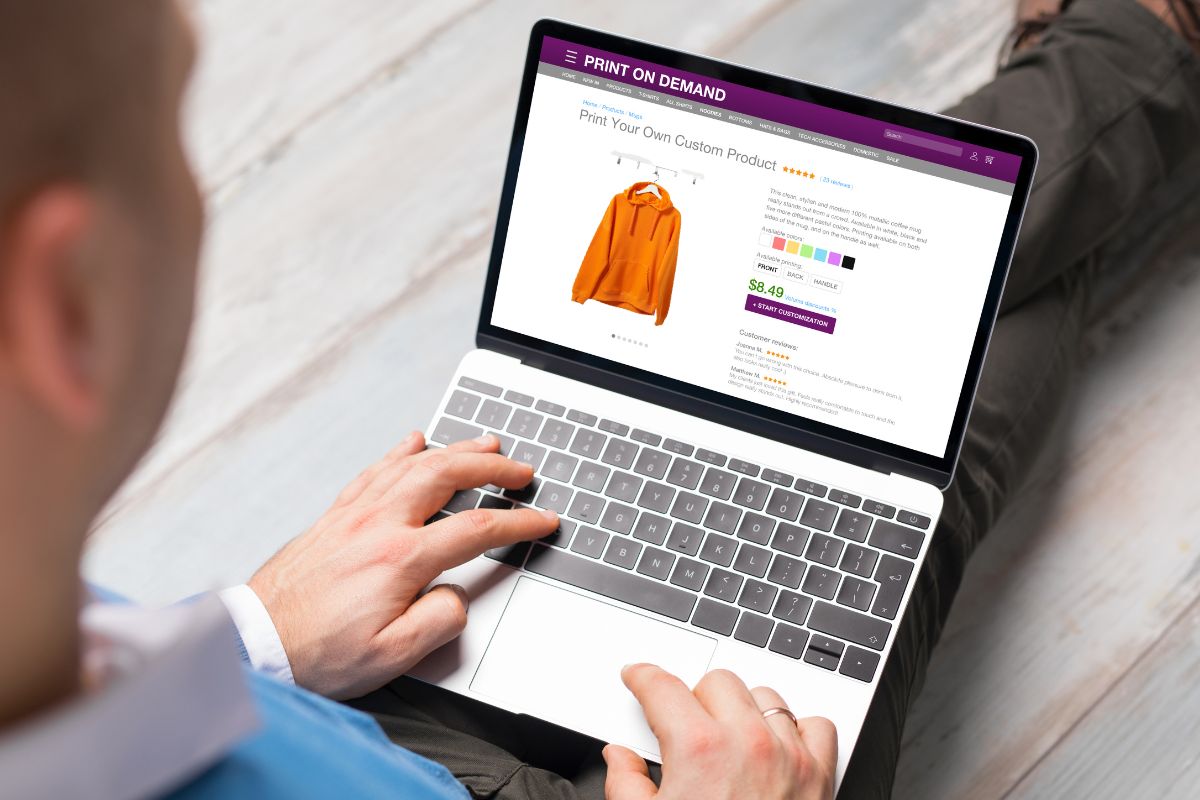Dropshipping in 2025: Is It Still a Profitable Business?
The question "Is dropshipping dead?" has become a tired refrain in the e-commerce world. With countless gurus flooding social media, the initial hype around this business model has left many wondering if it's still possible to turn a profit. As we stand in 2025, the landscape has changed dramatically. The "get-rich-quick" era of dropshipping is over. However, that doesn't mean the opportunity is gone; it has simply evolved. The global dropshipping market was valued at an impressive $435 billion in 2025, a significant jump from the previous year, and is projected to surpass $500 billion by 2026 (Source: Shopify). This explosive growth proves that the model is very much alive. Success now hinges on a more strategic, professional approach. This comprehensive guide will cut through the noise and reveal the data-backed truth about dropshipping in 2025, outlining exactly what it takes to build a thriving, profitable business today.
The Dropshipping Market in 2025: The Data-Backed Reality

The first question on every aspiring entrepreneur's mind is about profitability. The good news is that dropshipping is still highly profitable for those who are willing to put in the work. The average profit margin for active dropshipping stores hovers between 20% and 30%, which is significantly higher than the average retail fulfillment profit margin (3-10%). However, it’s not a get-rich-quick scheme. According to recent statistics, only a small percentage of stores—around 1.5%—earn over $50,000 in monthly revenue. The majority of successful dropshippers earn between $1,000 and $5,000 per month (Source: ZIK Analytics). These figures highlight a crucial shift: dropshipping has become a sustainable, long-term business model, not a side-hustle. The global market's projected growth to over $1.25 trillion by 2030 further solidifies its long-term viability (Source: Grand View Research).
Key Dropshipping Trends and Statistics in 2025:
- High-Ticket Products: The era of selling cheap, low-margin gadgets is fading. Successful dropshippers in 2025 are focusing on high-ticket items, where a single sale can yield a larger profit. Categories like furniture, home goods, and electronics offer larger profit margins, making it easier to cover rising ad costs.
- Niche Focus: The market is too saturated for a general store. Finding a profitable, specific niche is non-negotiable. Top niches in 2025 include fashion, beauty, home decor, and pet supplies, each with a strong and growing consumer base.
- AI and Automation: The most successful dropshipping stores are using automation and AI-powered tools for everything from product research and inventory management to dynamic pricing and customer service. These tools reduce manual work and provide a significant competitive advantage.
- Social Commerce: Platforms like TikTok and Instagram are no longer just for brand building. They are powerful sales channels. In 2025, shoppable videos and influencer collaborations are driving a huge portion of dropshipping revenue, with many stores relying heavily on platforms like TikTok for sales.
The Major Challenges Dropshippers Face in 2025
While the opportunities are vast, the challenges are equally significant. Successful dropshippers don't ignore these hurdles; they adapt and overcome them. Understanding these obstacles is the first step to building a resilient business.
1. Intense Competition and Saturated Markets
With low barriers to entry, the dropshipping space is incredibly competitive. To stand out, you need to differentiate yourself beyond just a product. This means building a unique brand, providing exceptional customer service, and focusing on a specific audience with tailored products.
2. Rising Ad Costs and Marketing Challenges
Digital advertising has become more expensive and complicated. Platforms like Meta and Google have raised ad rates, making customer acquisition a major challenge for beginners. Successful stores are shifting their focus to organic marketing, such as creating viral content on TikTok, building a strong email list, and running effective SEO campaigns to attract free, high-quality traffic.
3. Supplier Issues and Supply Chain Risks
Dropshippers are entirely reliant on their suppliers. This can lead to issues with product quality, shipping delays, and inventory management. The recent global trade tariffs have also created new financial hurdles, forcing some to re-evaluate their reliance on overseas suppliers. A key strategy for 2025 is to build relationships with reliable, local suppliers (e.g., in the US or Europe) to ensure faster shipping and higher customer satisfaction.
How to Start a Profitable Dropshipping Business in 2025: A Step-by-Step Guide
Starting a dropshipping business in 2025 requires a more strategic and disciplined approach than it did a few years ago. Follow these steps to set yourself up for long-term success:
Step 1: Find a Winning Niche and Product
This is the single most important step. Don't just follow the trends. Use tools like Google Trends, TikTok's creative center, and social media listening tools to identify a specific, underserved niche. For example, instead of just "pet supplies," consider a niche like "sustainable pet accessories" or "high-tech dog training gadgets." This specialization will help you stand out and build a loyal customer base. Look for products that solve a specific problem, evoke an emotional response, or are hard to find in local stores.
Step 2: Find a Reliable Supplier
Your supplier is your business partner. A bad one can ruin your reputation. Use platforms like CJdropshipping, Spocket, or Printful. These platforms vet suppliers and often offer faster shipping options. For high-ticket items, consider working directly with a manufacturer or a specialized wholesaler. Always order a sample product to check for quality, shipping times, and packaging before you start selling.
Step 3: Build a Professional and Trustworthy Store

Customers in 2025 are savvy. They can spot a generic, low-effort dropshipping store a mile away. Use a professional e-commerce platform like Shopify or WooCommerce. Invest in high-quality product images and compelling descriptions. A clean, user-friendly design and a clear returns policy are non-negotiable for building customer trust and authority. You can even use tools to create unique, branded packaging to elevate your store's image.
Step 4: Master Modern Marketing and Customer Acquisition
This is where you will spend most of your time and money. While paid ads are still a factor, a multi-channel approach is key. Here's a 2025 marketing playbook:
- Content Marketing: Create high-quality blog posts, YouTube videos, or TikTok content that provides value to your target audience. For example, if you sell home decor, create a video on "5 Ways to Brighten Up Your Living Room for Under $100."
- Social Media Marketing: Don't just post product pictures. Engage with your audience, run polls, and create short, entertaining videos. Use platforms like TikTok and Instagram Reels to go viral and drive organic traffic to your store.
- Email Marketing: Build an email list from day one. Use email automation to send welcome series, cart abandonment reminders, and special promotions. This is one of the most cost-effective ways to get repeat customers.
- Influencer Collaborations: Partner with micro-influencers in your niche. They have a loyal, engaged following, and a single mention from them can lead to a flood of new sales.
Step 5: Focus on Customer Service and Brand Building

In a crowded market, your brand is your biggest asset. This means going beyond just selling products. Answer customer questions quickly, resolve issues with returns or shipping delays, and ask for feedback. A positive review and a happy customer are worth more than any paid ad. This focus on building a genuine brand is what separates a long-term, profitable business from a short-lived scam.
Conclusion
So, is dropshipping still profitable in 2025? The definitive answer is yes, but with a major caveat: it's not easy. The landscape has matured, and the shortcuts are gone. Success now requires a strategic mindset, a strong work ethic, and a genuine commitment to building a brand that provides value to its customers. By focusing on niche selection, building a professional store, mastering modern marketing, and prioritizing customer satisfaction, you can absolutely carve out a profitable dropshipping business in today's competitive e-commerce world. The opportunities are there for those willing to do the work.
What's your biggest challenge with dropshipping? Let us know in the comments below! If you found this article helpful, be sure to share it with your network and subscribe for more e-commerce insights.
(1).png)